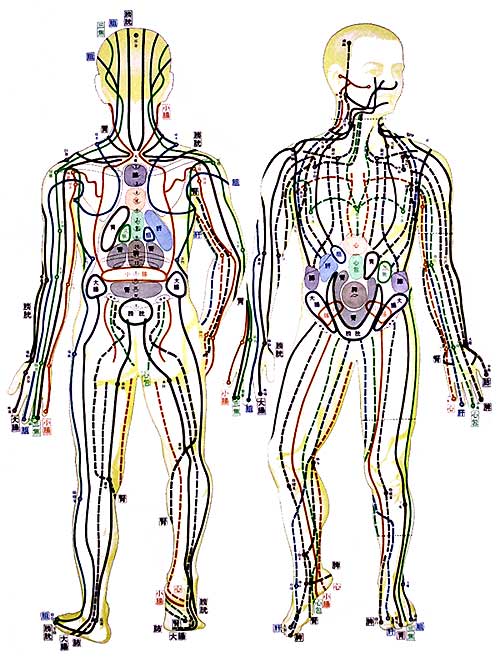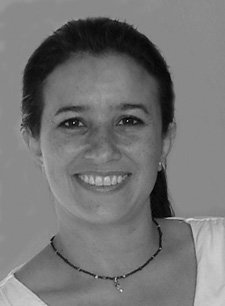

Lesson 3: Principles of Zen Shiatsu
Bodywork
Consistent with the basic concepts of Traditional
Chinese medicine, Zen Shiatsu is grounded in that health theory that health
problems are attributed to or involve:
- imbalances of yin and yang
- disharmonies between the internal organs
- blockages of the circulation of ki (in
Chinese: qi; in English: chi) through the meridians
The unique features of Zen Shiatsu, compared to Traditional Chinese medicine
techniques such as acupuncture or other shiatsu techniques, are these:
- For diagnosis, abdominal palpation is the primary technique used. Abdominal
diagnosis (in Japan: hara diagnosis) is an ancient Chinese technique
that had been largely abandoned in China, but became important of Kampo
(the Japanese practice of Chinese medicine) around the beginning of the
18th century. Abdominal diagnosis is used in Japan for herbal medicine prescribing,
acupuncture, and Zen Shiatsu. The diagnosis is primarily aimed at determining
whether each meridian is relatively empty (Japanese: kyo, Chinese:
xu) or relatively full (Japanese: jitsu; Chinese: shi).
At the end of each treatment the abdominal diagnosis is performed again
to ascertain improvements that have occurred.
Alex Holland President
and Founder, Asian Institute of Medical Studies
Ask a Zen Shiatsu question
- Pressure is applied at intervals along the meridians that were described
by Masunaga. He presented 12 meridians, corresponding to the 12 basic
organ-affiliated meridians of the Chinese system. The meridian pathways are
similar to, but not the same as, the Chinese ones; the main difference being
an extension of each meridian to a range from legs to arms, passing through
the associated diagnostic region of the abdomen.
- The treatment involves brief contact with each point, in a somewhat
rhythmic pattern as a portion of a meridian is traced. The contact is with
fairly strong pressure that is applied using the movement of the practioneer
body, fingers, elbows, and other parts of the body.
- To attain the proper combination of pressure and movement along the
meridian, the practioneer may move frequently around the recipient's body and
may even move the recipient (who is instructed to remain passive), such as
lifting the head or arms. The actions may include turning or bending over the
recipients body parts with the purposes of gaining access to essential points,
stretching the meridians, and using gravity or leverage to attain the needed
pressure at certain points. The therapy does not focus on one part of the
body, even if the health problem is localized; the whole body becomes
involved.
- The practioneer works within a meditative state, focusing on the responses
of the recipient so as to properly direct the therapy, as opposed to focusing
on selection of pressure points by a theoretical
system. To develop this condition of heightened awareness and clear
intention, the practioneer practices meditation regularly.
Because of its connection to Traditional Chinese Medicine, Zen Shiatsu serves
as an excellent adjunct to acupuncture therapy as well as Chinese or Japanese
herb prescribing, fitting well with the theoretical framework. Further, it
serves as a complementary therapy for Western methods of manipulation, including
chiropractic or standard massage (e.g., Swedish style), providing an entirely
different stimulus to the body.
Although Masunaga's Zen Shiatsu is considered essential reading for practioneer,
the main textbook of Zen Shiatsu used today is Shiatsu Theory and Practice
by Carola Beresford-Cooke (first published 1996; revised edition 2002). She
has outlined five basic principles of Zen Shiatsu as follows:
- Relax The practioneer must be in a comfortable physical and mental
condition to convey comfort to the recipient; the arms, hands, neck, and
shoulders must be relaxed, not tensed, to give the proper treatment and to
perceive the recipient responses.
- Use penetration rather than pressure. It is understood that the body has
spots (called tsubo) that can receive the pressing by the practioneer;
the muscle gives way to the penetrating force to let it enter, rather than
being pushed away by pressure. The result is an entirely different experience
than the mere finger-pressing, and requires that the practioneer have the
correct position in relation to the recipient and be mindful of the technique
being used.
- Perpendicular penetration without side-to-side motion. Unlike many massage
techniques where movement across the surface is emphasized, Zen Shiatsu
involves penetration at each point, perpendicular to the body surface.
Although there are a few exceptions, the treatment does not involve rotations,
back-and-forth, or wiggling movements of the hands, but simple direct
inward-directed movements.
- Two handed connectedness. The Zen Shiatsu practioneer maintains two hands
on the recipients body; one hand may be still and holding a part of the body
in position, while the other is active, penetrating points on the meridians.
The practioneer is advised to give attention to the role of both hands, not
just the mode active one.
- Meridian continuity. The focus of the therapy is to treat an entire
meridian, not just individual points or regions. This is based on the theory
that the imbalances to be addressed are based in the meridians, which require
a free flow of ki throughout.







